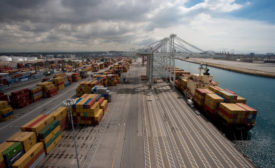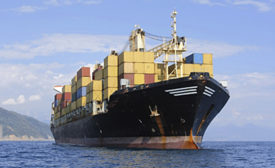Home » Keywords: » cargo handling
Items Tagged with 'cargo handling'
ARTICLES
Port of Long Beach deploys new hydrogen-, electric-powered cargo handling equipment
This move helps the port's goal in becoming what is said to be the world’s first zero-emissions seaport.
October 3, 2019
Kinedyne opens new distribution facility
The mew facility is equipped with the latest inventory management technology.
August 6, 2019
Port of Oakland’s yard cranes going hybrid to help clean air
Each crane is being equipped with batteries and new, smaller diesel backup engines.
March 27, 2019
Study: U.S. seaports contribute greatly to nation’s economy
Between 2014-2018, the total number of jobs supported by cargo moving through the United States’ deep-draft ports increased by more than one-third, from 23.1 million jobs to 30.8 million.
March 22, 2019
Damco, A.P. Moller-Maersk integrate products to enhance supply chain services
Effective Jan. 1, 2019, Damco’s supply chain services and Maersk Line’s ocean product will be integrated and sold as Maersk products and services.
September 27, 2018
Port of Long Beach receives zero-emissions equipment grant
The demonstration will include three cargo-moving vehicles known as “top handlers” with never-before-tested battery-electric systems.
July 10, 2018
Port of Long Beach to build infrastructure for zero-emissions cargo handling equipment
The PAVE Project will design and build charging outlets for almost 40 pieces of electrical terminal equipment at TTI.
June 22, 2018
Port of Long Beach launches pilot for zero-emissions cranes, cargo handling equipment
The project will bring 25 vehicles that are zero- or near zero-emissions to Port of Long Beach marine terminals for one year to test their performance in a real-world setting.
April 5, 2018
Get our new eMagazine delivered to your inbox every month.
Stay in the know on the latest food and beverage manufacturing markets.
SUBSCRIBE TODAYCopyright ©2024. All Rights Reserved BNP Media.
Design, CMS, Hosting & Web Development :: ePublishing





